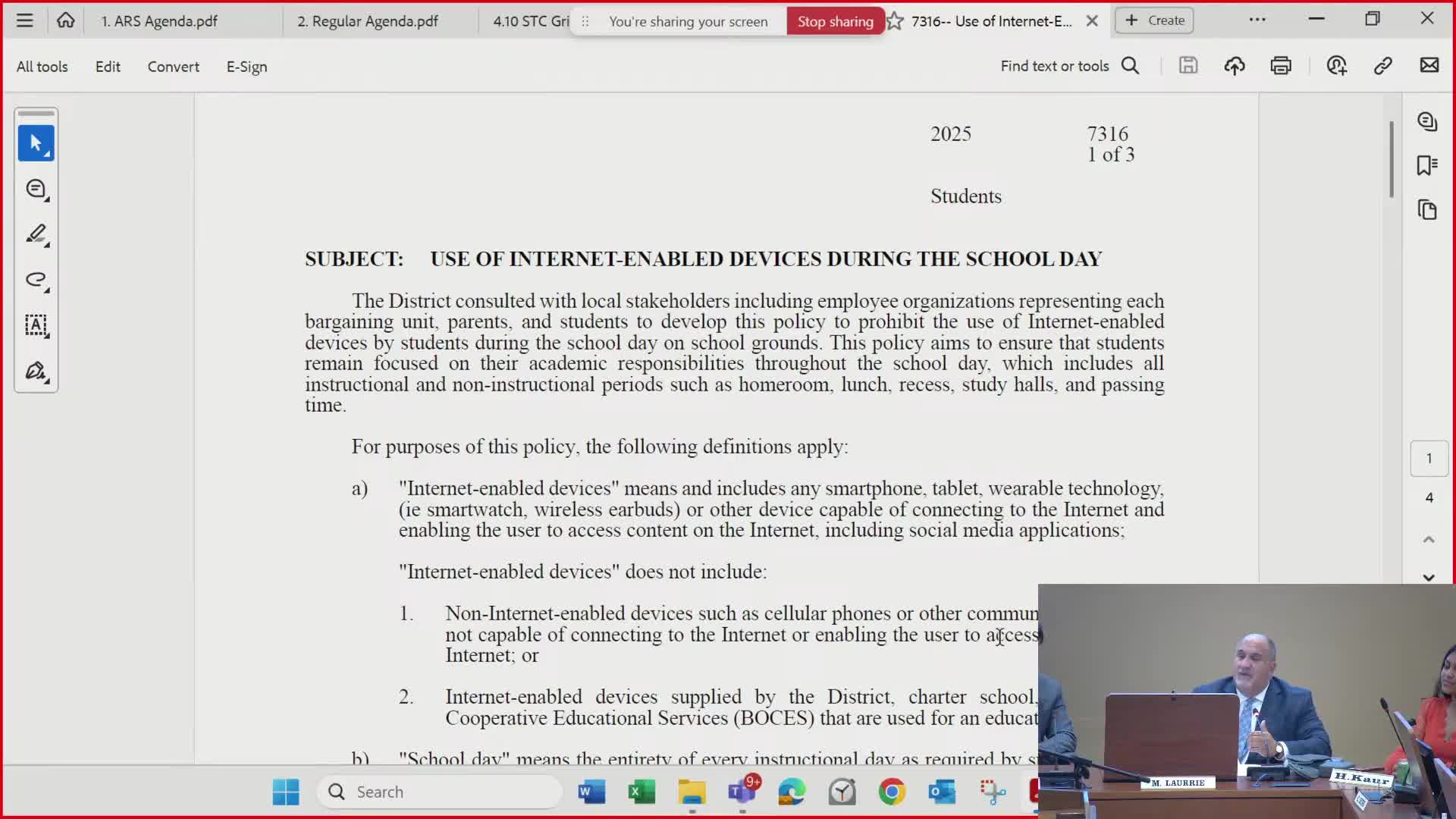School Leaders Introduce New Cell Phone Policy and Safety Measures for Students
August 01, 2025 | NIAGARA FALLS CITY SCHOOL DISTRICT, School Districts, New York
This article was created by AI summarizing key points discussed. AI makes mistakes, so for full details and context, please refer to the video of the full meeting. Please report any errors so we can fix them. Report an error »

The NFCSD Board of Education convened on July 31, 2025, to discuss several key issues affecting the district, including new policies on cell phone usage and temperature regulations in school buildings.
The meeting began with a focus on the implementation of a cell phone pouch policy aimed at reducing distractions in classrooms. The superintendent emphasized the importance of collaboration among teachers and students to ensure the policy's success. Teachers were advised to communicate openly with their students about the need for two-step authentication when using their phones for school-related tasks. The expectation is that phones should be stored away during class time, with students allowed to use them outside of school hours and during designated breaks.
Concerns were raised regarding the financial implications of the pouch policy, as the state funding of $10.90 per student for grades 7 through 12 fell significantly short of the total costs. The district has allocated additional budget funds to cover the difference, with hopes that unused funds may be redistributed to schools actively using the pouches.
The superintendent also addressed logistical challenges, such as the responsibility of students to secure their phones in pouches upon entering the school and the potential for loss or damage. The board discussed the need for a gradual adjustment period, estimating that it may take five to eight weeks for students and staff to adapt to the new policy.
In addition to cell phone regulations, the board reviewed a state-mandated policy regarding maximum temperature limits in school buildings. The policy outlines specific actions to be taken when classroom temperatures exceed 82 degrees Fahrenheit, including providing water breaks and relocating students if temperatures reach 88 degrees. The superintendent noted that most district buildings are air-conditioned, which should help mitigate heat-related issues.
The meeting concluded with a commitment to monitor the effectiveness of the new policies through surveys and feedback from staff and students. The board plans to revisit these topics in future meetings to assess progress and make necessary adjustments.
The meeting began with a focus on the implementation of a cell phone pouch policy aimed at reducing distractions in classrooms. The superintendent emphasized the importance of collaboration among teachers and students to ensure the policy's success. Teachers were advised to communicate openly with their students about the need for two-step authentication when using their phones for school-related tasks. The expectation is that phones should be stored away during class time, with students allowed to use them outside of school hours and during designated breaks.
Concerns were raised regarding the financial implications of the pouch policy, as the state funding of $10.90 per student for grades 7 through 12 fell significantly short of the total costs. The district has allocated additional budget funds to cover the difference, with hopes that unused funds may be redistributed to schools actively using the pouches.
The superintendent also addressed logistical challenges, such as the responsibility of students to secure their phones in pouches upon entering the school and the potential for loss or damage. The board discussed the need for a gradual adjustment period, estimating that it may take five to eight weeks for students and staff to adapt to the new policy.
In addition to cell phone regulations, the board reviewed a state-mandated policy regarding maximum temperature limits in school buildings. The policy outlines specific actions to be taken when classroom temperatures exceed 82 degrees Fahrenheit, including providing water breaks and relocating students if temperatures reach 88 degrees. The superintendent noted that most district buildings are air-conditioned, which should help mitigate heat-related issues.
The meeting concluded with a commitment to monitor the effectiveness of the new policies through surveys and feedback from staff and students. The board plans to revisit these topics in future meetings to assess progress and make necessary adjustments.
View full meeting
This article is based on a recent meeting—watch the full video and explore the complete transcript for deeper insights into the discussion.
View full meeting
